Experience Tranquility: How Jiaoshan Offers a Unique Blend of Culture and Nature
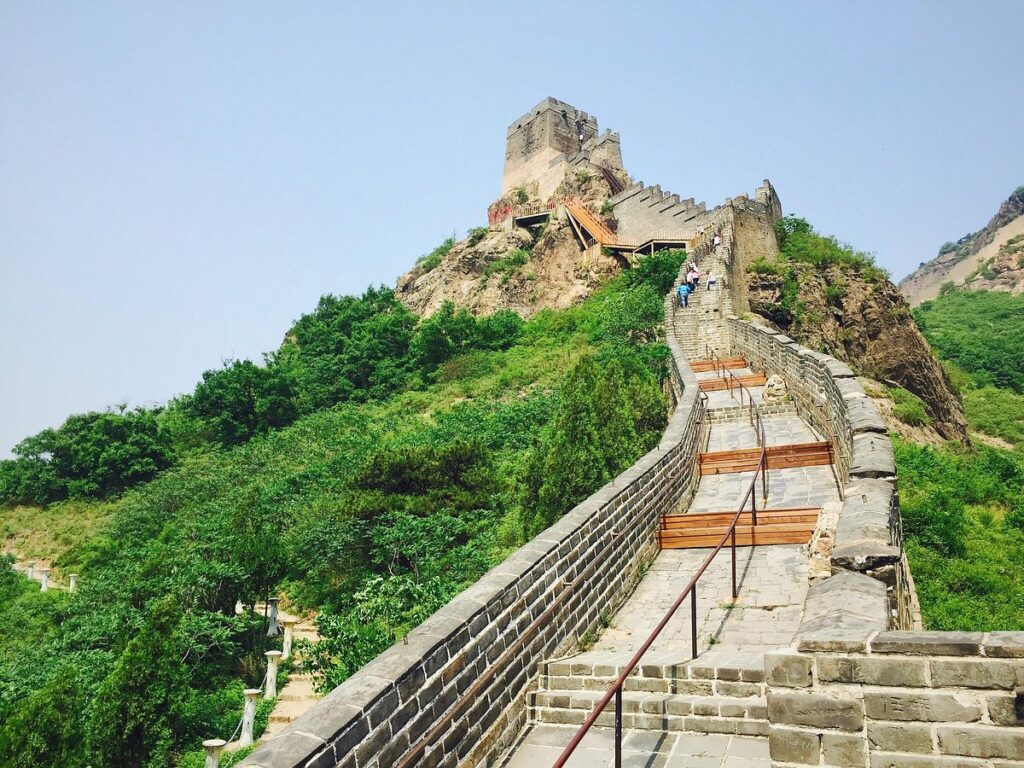
An Essential Guide to Visiting Jiaoshan
Nestled in the picturesque city of Zhenjiang, Jiaoshan (焦山) is a hidden gem that offers a tranquil escape from the bustling urban life. What sets Jiaoshan apart is its enchanting fusion of natural beauty and rich cultural heritage, epitomized by the ancient inscriptions carved into its rocks and the serene Buddhist temples that dot its landscape. This small island, accessible only by ferry or fast boat, invites travelers to embark on a leisurely hike that culminates in breathtaking views and profound historical insights.
In this guide, we will explore the essential aspects of visiting Jiaoshan, including how to get there, the best times to visit, and must-see attractions on the island. From the captivating stone tablets that showcase exquisite calligraphy to the tranquil gardens and the charming pagoda perched atop the hill, every corner of Jiaoshan is steeped in history and beauty. Whether you seek a peaceful retreat or an opportunity to immerse yourself in Chinese culture, Jiaoshan promises an unforgettable experience that will linger in your memories long after your visit.
In This Guide
- An Essential Guide to Visiting Jiaoshan
- The Rich History and Legends of Jiaoshan
- Main Highlights: What You Absolutely Can’t Miss
- Planning Your Visit: A Practical Guide
- Tickets: Prices, Booking, and Tips
- How to Get There: A Complete Transportation Guide
- Local Cuisine and Accommodation Nearby
- Frequently Asked Questions
- Final Thoughts on Your Trip
The Rich History and Legends of Jiaoshan
A Journey Through Time: The Rich History and Legends of Jiaoshan
Nestled on an island in the Yangtze River, Jiaoshan Mountain has long been a revered site in Chinese culture, steeped in history and embellished with legends that captivate visitors to this day. From ancient dynasties to modern times, Jiaoshan has served as a sanctuary for scholars, monks, and travelers alike.
Ancient Beginnings: A Sacred Site
The history of Jiaoshan dates back over a thousand years, with its earliest records pointing to the Eastern Jin Dynasty (317-420 AD). During this time, the mountain was considered a sacred site where Buddhist monks sought solitude and enlightenment. The serenity of its landscapes provided the perfect backdrop for meditation and contemplation, establishing Jiaoshan as a spiritual haven.
As the centuries unfolded, Jiaoshan evolved into a prominent center for culture and education. Scholars flocked to the area, drawn by its tranquil environment, leading to the creation of numerous calligraphy tablets and inscriptions that still adorn the mountain today. These artifacts reflect the rich literary heritage of the region, showcasing the artistry and philosophical depth of Chinese scholars.
The Tang and Song Dynasties: A Flourishing Culture
The Tang Dynasty (618-907 AD) marked a golden era for Jiaoshan. It became a popular retreat for poets and artists who sought inspiration amidst its picturesque scenery. The mountain inspired renowned poets such as Li Bai and Du Fu, whose verses celebrated the beauty of nature and the human spirit. The interplay of nature and culture during this period established Jiaoshan as a symbol of artistic expression.
During the Song Dynasty (960-1279 AD), Jiaoshan further solidified its importance as a cultural landmark. The construction of temples and pavilions enhanced its status as a spiritual and intellectual center. Among the most notable structures is the Jiaoshan Temple, which has undergone various renovations and restorations over the centuries, continuing to attract pilgrims and tourists alike.
Legends and Folklore: Tales of the Mountain
As with many historical sites, Jiaoshan is steeped in folklore. One of the most famous legends tells the story of a hermit who, seeking enlightenment, ascended the mountain. After years of meditation, he achieved a state of transcendence and transformed into a celestial being, promising to protect the mountain and its visitors. This legend has contributed to the belief that Jiaoshan is a mystical place where one can connect with the divine.
Another popular tale involves the stone tablets scattered throughout the mountain. It is said that each tablet holds the wisdom of a great scholar, and those who read their inscriptions will gain insight into their own lives. Visitors often pause to ponder the messages etched into these stones, hoping to absorb the knowledge of those who walked the same paths centuries ago.
The Modern Era: Preserving Heritage Amidst Change
In recent years, Jiaoshan has become a favored destination for both domestic and international travelers. Despite the encroaching modernity surrounding Zhenjiang, efforts have been made to preserve the natural beauty and cultural significance of the mountain. The establishment of parks and walking trails allows visitors to experience the tranquility that has attracted seekers of wisdom for centuries.
Moreover, the mountain continues to be a site of cultural festivals, where traditional performances and rituals celebrate its history and legends. These events foster a sense of community and connection, bridging the past with the present.
Conclusion: A Mountain of Stories
Jiaoshan Mountain stands not only as a geographical landmark but also as a repository of history, culture, and legend. Each visit to this enchanting site is an invitation to engage with the stories of those who came before, offering a unique glimpse into the rich tapestry of Chinese heritage. Whether you are drawn by its spiritual significance, the allure of its legends, or the beauty of its landscapes, Jiaoshan promises an unforgettable journey through time.

Jiaoshan.
Main Highlights: What You Absolutely Can’t Miss
Jiaoshan Mountain: A Journey Through History and Nature
Nestled in the picturesque Zhenjiang, Jiaoshan Mountain offers an enchanting blend of natural beauty and rich cultural heritage. As you embark on your exploration of this serene island destination, here are the must-see highlights that will make your visit unforgettable.
1. The Ferry Ride to Jiaoshan
Your adventure begins with a scenic ferry ride across the Yangtze River. Purchase your ticket at the mainland booth for a modest fee (around 50 RMB), which includes your boat passage. The gentle waves and stunning views of Zhenjiang set the perfect tone for your exploration ahead. Be sure to arrive early, especially on weekends, to avoid crowds and secure a good spot on the boat.
2. Jiaoshan Mountain Temple
At the summit of Jiaoshan lies a quaint temple that offers a glimpse into the spiritual heart of the island. While the temple may occasionally be closed for renovations, its tranquil surroundings and historical significance are undeniably captivating. Take your time to enjoy the serene atmosphere and perhaps meditate amidst the ancient stones and lush greenery. Don’t forget to bring your camera; the view from the temple is breathtaking!
3. Calligraphy Tablets (BeiLin)
One of the island’s most treasured attractions is the collection of ancient calligraphy tablets. Revered for their artistic beauty and historical significance, these stone inscriptions showcase the elegance of Chinese characters. Spend some time walking among the tablets, appreciating the artistry and the stories they tell. This spot is especially appealing to history buffs and art lovers alike.
4. The Old Fort
As you wander through the island, make sure to visit the Old Fort, a remnant of Jiaoshan’s military past. This historically significant site provides insight into the region’s defense against foreign invasions. While exploring the fort, take a moment to reflect on the turbulent history that shaped modern China. The panoramic views from the fort are also worth the climb!
5. The Pagoda
The highlight of the mountain is undoubtedly the pagoda that stands majestically at the top. While it may be closed for maintenance from time to time, the journey up the hill is rewarding in itself. Prepare for a bit of a climb; the steps can be steep, but numerous resting spots along the path allow you to catch your breath and soak in the vistas. Aim to start your hike early to ensure you have ample time to explore before the pagoda closes.
6. Lotus Ponds and Gardens
As you descend from your mountain adventures, don’t miss the serene lotus ponds and beautifully landscaped gardens. These picturesque spots are perfect for a peaceful stroll or a leisurely picnic. The lotus flowers, when in bloom, create a stunning tapestry of colors that enhance the natural beauty of Jiaoshan. Bring along a snack or two to enjoy as you relax in this tranquil setting.
7. Scenic Views and Photography
Throughout your visit, keep your eyes peeled for breathtaking viewpoints. The island offers numerous spots perfect for photography, capturing the stunning landscapes of the Yangtze River and the surrounding mountains. Sunrise and sunset are particularly magical times to snap that perfect shot, so plan your visit accordingly.
Practical Tips
- Best Time to Visit: Early mornings and late afternoons are ideal for fewer crowds and perfect lighting for photography.
- What to Bring: Comfortable walking shoes, water, and snacks. A light jacket may be handy if you plan to stay until evening.
- Accessibility: The ferry ride is straightforward, but be prepared for some climbing and uneven paths at the mountain.
- Nearby Attractions: Consider visiting Beigu Mountain and Dinghui Temple, both within close proximity and offering additional cultural experiences.
With its harmonious blend of nature, history, and tranquility, Jiaoshan Mountain is a destination that promises a memorable escape from the hustle and bustle of modern life. Enjoy your journey!
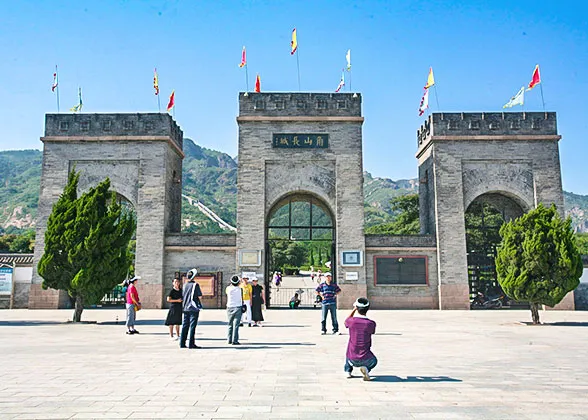
Jiaoshan.
Planning Your Visit: A Practical Guide
Best Time to Visit
Jiaoshan Mountain is a year-round destination, but the best time to experience its beauty is during the spring (March to May) and autumn (September to November) months. During these periods, the weather is mild, and you can enjoy the vibrant foliage and blooming flowers. Summer can be quite hot and humid, while winter can bring chilly temperatures that may deter some visitors.
Recommended Itinerary
Morning:
– Ferry Ride: Start your day with a scenic ferry ride from Zhenjiang to Jiaoshan. The ride typically takes about 10-15 minutes.
– Visit the Temple: Upon arrival, head straight to the temple at the top of the hill. Enjoy the tranquil atmosphere and take in the stunning views.
Midday:
– Hike the Trails: Spend a couple of hours hiking the trails. There are two main paths to choose from, each offering unique sights, including inscriptions carved into rocks and beautiful lotus ponds.
– Lunch: Bring a packed lunch or snacks, as dining options on the island are limited. Alternatively, return to Zhenjiang for a wider selection of restaurants.
Afternoon:
– Explore Historical Sites: After lunch, take your time exploring the historical structures, including the old fort and various pavilions. Don’t forget to capture the intricate calligraphy tablets along the way.
– Relax in the Gardens: Wind down your visit with a stroll through the gardens, soaking in the peaceful surroundings before heading back to the mainland.
Photography Tips
- Golden Hours: For the best lighting, plan your photography during the golden hours of sunrise and sunset. The soft light enhances the beauty of the landscape and the architectural features.
- Vary Your Angles: Capture both wide shots of the mountain and close-ups of intricate details on temples and inscriptions. Experiment with different perspectives to add depth to your photos.
- Bring a Tripod: If you’re interested in capturing long-exposure shots of the landscape or the serene water, a tripod is essential, especially in low-light conditions.
What to Wear
- Comfortable Footwear: As you will be hiking up the hill, sturdy and comfortable shoes are a must. Sneakers or hiking boots are ideal for navigating rocky paths.
- Weather-Appropriate Clothing: Dress in layers, as temperatures can fluctuate throughout the day. A light jacket is advisable for cooler mornings or evenings.
- Sun Protection: Don’t forget sunglasses, a hat, and sunscreen, especially during the summer months when the sun can be intense.
Insider Tips
- Early Bird Advantage: Arrive early to beat the crowds and enjoy a more peaceful experience, particularly if you want to visit the temple before it gets busy.
- Bring Snacks and Water: Since dining options on the island are limited, pack some snacks and plenty of water to stay energized during your visit.
- Engage with Locals: If you have the opportunity, talk to local residents or vendors. They can provide fascinating insights into the history and culture of Jiaoshan.
- Check Opening Times: While Jiaoshan is open year-round, some attractions, such as the temple and pagoda, may have varying hours. Check ahead to avoid disappointment.
- Explore Nearby Attractions: If you have extra time, consider visiting nearby Beigu Mountain or Dinghui Temple for additional cultural experiences.
By planning ahead and considering these tips, you can make the most of your visit to Jiaoshan Mountain, ensuring a memorable and enriching experience in this beautiful part of China.
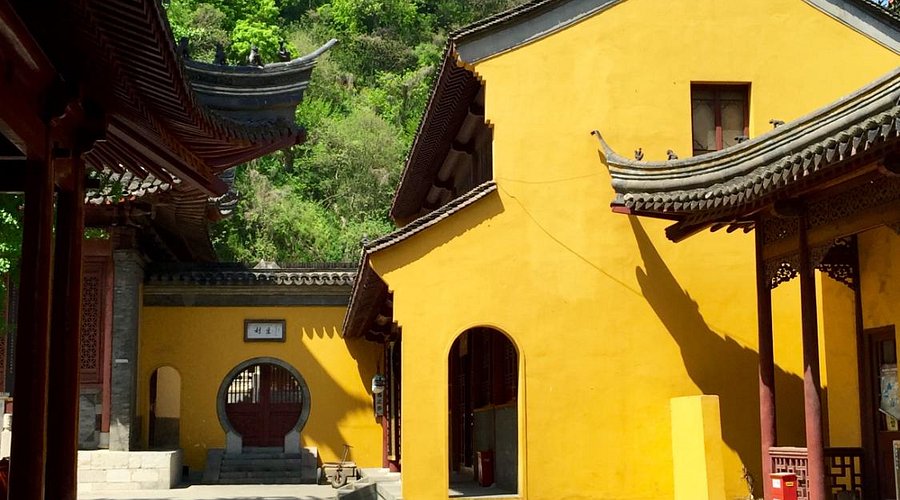
Jiaoshan.
Tickets: Prices, Booking, and Tips
When planning your visit to Jiaoshan, it’s important to know the ticket options, prices, and how to secure your spot for this enchanting destination. Below is a handy guide to help you navigate through the ticketing process.
| Ticket Type | Price (CNY) | Includes |
|---|---|---|
| Standard Admission | 50 | Ferry ride to Jiaoshan, access to the island and attractions |
| Discounted Admission | 25 | Applicable for seniors (60+ years) |
Booking Information
Purchasing your tickets for Jiaoshan is straightforward. You can buy them at the ticket booth located near the ferry terminal on the mainland. However, to avoid long queues, especially during weekends or holidays, it’s advisable to book your tickets in advance.
Tips for a Smooth Experience
- Arrive Early: The ferry rides to Jiaoshan can get busy, particularly during peak tourist seasons. Arriving early ensures you can enjoy the ferry ride and explore the island at a leisurely pace.
- Check Ferry Schedule: Make sure to check the ferry schedule ahead of time to plan your visit effectively. The ferries typically operate throughout the day, but timings may vary depending on the season.
- Bring Snacks: There are limited food options on the island, so consider bringing some snacks or a packed lunch to enjoy while soaking in the beautiful views.
By following these tips and securing your tickets in advance, your visit to Jiaoshan will be a delightful experience filled with stunning landscapes and rich history. Enjoy your adventure!
How to Get There: A Complete Transportation Guide
Accessing Jiaoshan: Your Comprehensive Transportation Guide
Jiaoshan, a serene island renowned for its historical significance and natural beauty, is a must-visit when exploring Zhenjiang, China. Here’s how to reach this picturesque destination and navigate the scenic area.
From the Nearest Major City: Nanjing
By Train
Traveling to Zhenjiang from Nanjing is a breeze, thanks to the efficient rail network. High-speed trains depart from Nanjing South Railway Station to Zhenjiang Railway Station frequently throughout the day. The journey takes approximately 30 minutes and costs around ¥45-¥60 (approximately $7-$10), depending on the service.
By Bus
Alternatively, you can take a long-distance bus from Nanjing to Zhenjiang. Buses depart from various stations, including Nanjing’s Zhongyangmen Bus Station. The journey is slightly longer, taking about 1-1.5 hours, and costs around ¥30 (approximately $5).
By Car
If you prefer the freedom of driving, renting a car is a viable option. The distance from Nanjing to Zhenjiang is about 70 kilometers (approximately 43 miles), and the drive takes around 1-1.5 hours, depending on traffic. You can take the G25 Changshen Expressway for the most direct route.
Getting to Jiaoshan Island
Once you arrive in Zhenjiang, getting to Jiaoshan is straightforward:
By Ferry
Jiaoshan is located on an island, accessible only by water transport. The ferry terminal is within walking distance from Zhenjiang Railway Station. Tickets for the ferry or fast boat can be purchased at the terminal for about ¥50 (approximately $8), which includes the round trip. The ferry ride is scenic and takes about 15-20 minutes to reach Jiaoshan.
Getting Around the Scenic Area
Once on Jiaoshan, the best way to explore is on foot. The island features several well-marked paths leading to various attractions, including temples, pagodas, and beautiful gardens.
Walking Paths
There are two main paths to hike up the hill: the older, more rugged route and a newer, more accessible path. Be prepared for some steps, but rest areas are available along the way. The average hike to the top takes about 30-45 minutes, depending on your pace.
Local Transport
While walking is the primary mode of transport, you may encounter local electric carts or bicycles available for rent at certain points, especially during peak tourist seasons.
Accessibility
There are no entrance fees for Jiaoshan itself, making it an affordable outing. However, some specific sites, like temples or exhibitions, may have separate charges. It’s advisable to check local signs for any fees and operating hours.
In summary, reaching Jiaoshan is a simple and enjoyable process, whether you come from Nanjing or just around Zhenjiang. With its breathtaking views and rich history, Jiaoshan promises an enchanting experience for all international travelers.
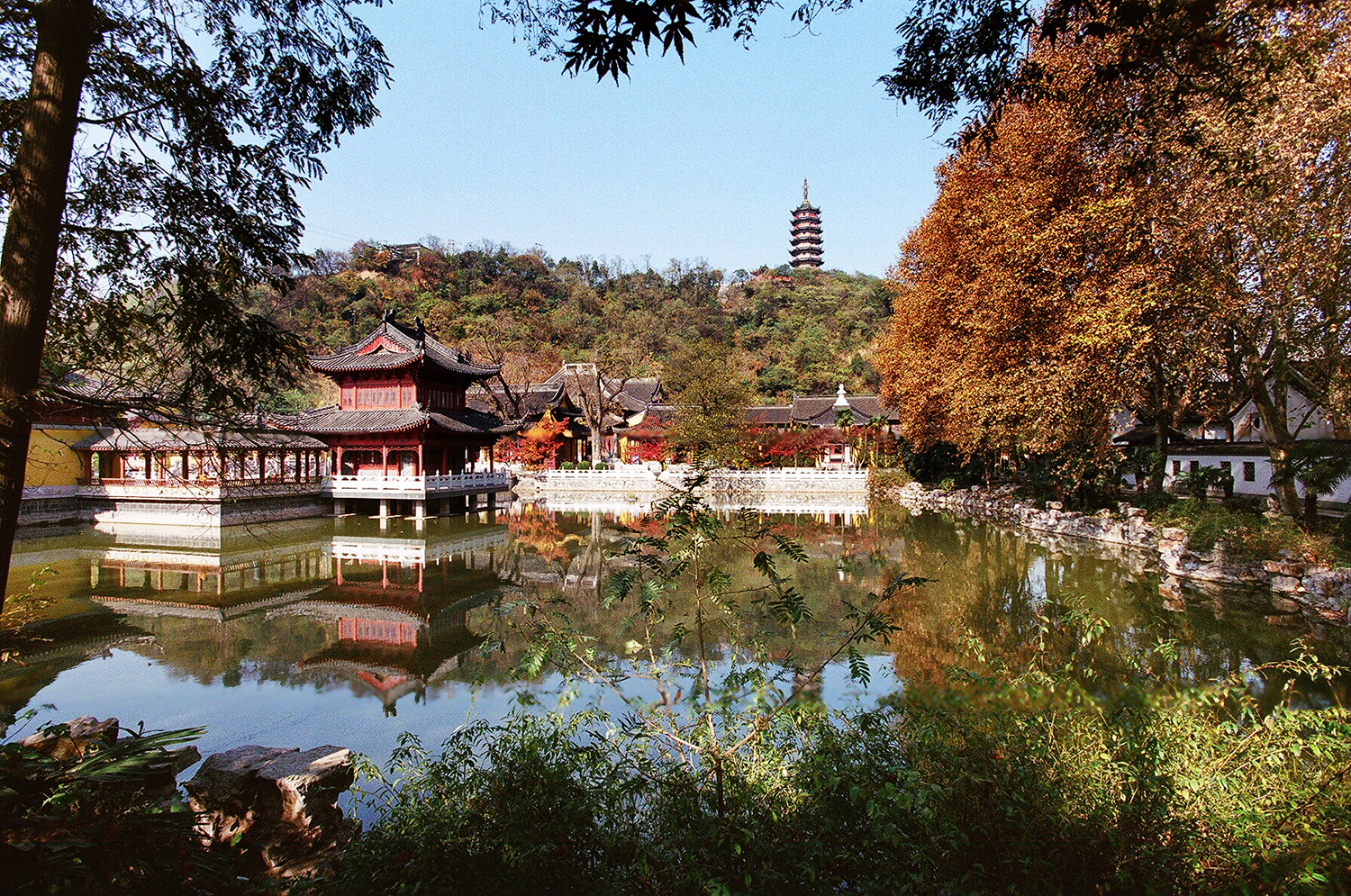
Jiaoshan.
Local Cuisine and Accommodation Nearby
When visiting Jiaoshan, the stunning mountain that graces Zhenjiang with its natural beauty and historical significance, you’ll find that the local cuisine and accommodation options enhance your experience. Here’s a guide to the delectable dishes you shouldn’t miss and the best places to stay nearby.
Local Flavors to Savor
-
Szechuan Hot Pot
Delight in the fiery flavors of Szechuan hot pot, where you can choose from a variety of fresh ingredients, including meats, seafood, and vegetables, cooked in a bubbling, spicy broth. This communal dining experience is perfect for sharing stories and flavors with friends or fellow travelers. -
Dongpo Pork
A must-try dish in the region, Dongpo Pork features succulent, braised pork belly that melts in your mouth, enhanced with rich soy sauce, cooking wine, and a hint of sugar. Traditionally served with steamed buns, this dish is an iconic representation of Jiangsu cuisine. -
Zhenjiang Vinegar Fish
This dish showcases the famous Zhenjiang vinegar, known for its unique aroma and flavor. The fish is typically marinated, then steamed or braised, allowing the subtle tang of the vinegar to infuse the tender meat. The combination of flavors makes it a local favorite. -
Noodles with Braised Duck
A comforting and hearty option, this dish features tender braised duck served over a bed of noodles. The rich sauce, made from spices and soy sauce, adds depth to the dish, making it a satisfying meal after a day of hiking.
Where to Stay
Luxury Option: Zhenjiang Grand Hotel
For travelers seeking a touch of elegance, the Zhenjiang Grand Hotel offers luxurious accommodations, complete with spacious rooms and stunning views of the Yangtze River. The on-site restaurants serve a range of local and international cuisine, perfect for indulging after a day of exploration.
Boutique Option: Wuxi Xiang Hotel
This charming boutique hotel is a stone’s throw away from Jiaoshan, providing a cozy atmosphere with uniquely decorated rooms that reflect local culture. Guests can enjoy personalized service and a complimentary breakfast featuring local delicacies, making it a delightful choice for those who appreciate character and comfort.
Budget Option: Zhenjiang Youth Hostel
For budget-conscious travelers, the Zhenjiang Youth Hostel offers a friendly environment with dormitory-style and private rooms. It’s conveniently located near public transport, making it easy to access Jiaoshan and other attractions. The hostel is a great spot to meet fellow adventurers and share travel tips.
Whether you’re indulging in the local flavors or enjoying a restful stay, Jiaoshan and its surroundings promise an unforgettable experience for every traveler.
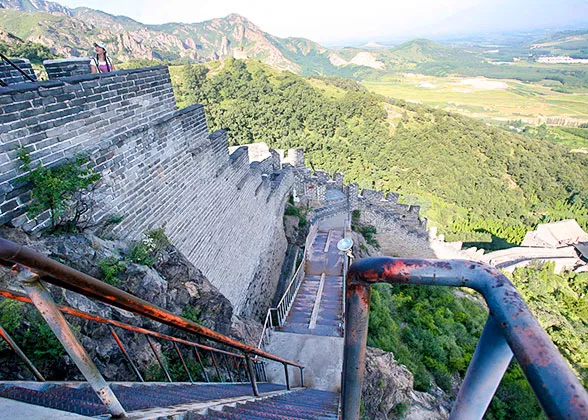
Jiaoshan.
Frequently Asked Questions
Frequently Asked Questions about Jiaoshan (焦山)
-
Is Jiaoshan suitable for children and the elderly?
Yes, Jiaoshan is generally suitable for families with children and elderly visitors. The paths leading up the hill can be steep in places, so it’s advisable to take breaks as needed. There are plenty of spots to rest along the way, and the scenic environment makes for a pleasant stroll. -
Are there English signs and information available?
While some signs and information at Jiaoshan may be in English, a majority are in Chinese. It’s helpful to download a translation app or bring a phrasebook for a smoother experience. Local staff may have basic English skills, which can assist in navigating the site. -
How much time should I plan for my visit?
Plan to spend approximately 2 to 4 hours at Jiaoshan. This allows ample time to explore the scenic paths, visit the temples, and enjoy the beautiful gardens. If you want to take your time or hike up to the pagoda, consider allocating a few extra hours. -
What is the cost of visiting Jiaoshan?
The entrance fee to Jiaoshan is 50 RMB, which includes a ferry ticket to the island. Discounts may be available for seniors or students, so it’s worth asking at the ticket booth. -
Is there food available on the island?
There are limited food options on Jiaoshan, so it’s a good idea to bring snacks or a packed lunch. Enjoying a meal surrounded by nature can enhance your visit, but be mindful of leaving no trace. -
What are the operating hours for Jiaoshan?
Jiaoshan is open daily from 8:00 AM to 5:00 PM. It’s best to arrive early to avoid crowds, especially during weekends and holidays. -
How do I get to Jiaoshan?
To reach Jiaoshan, you will need to take a ferry or fast boat from the mainland. Tickets can be purchased at the ferry terminal. The ferry ride offers lovely views of the river and surrounding landscape. -
Are there restrooms available on the island?
Yes, restrooms are available on Jiaoshan, but they may be limited in number. It’s advisable to use the facilities before boarding the ferry, especially if you plan to spend an extended time on the island.
Final Thoughts on Your Trip
As you wrap up your journey to Jiaoshan, let the serene beauty and rich history of this enchanting island resonate within you. The gentle climb up the hill, flanked by ancient inscriptions and lush landscapes, offers not just a physical adventure but a glimpse into the profound cultural tapestry of China. From the tranquil temples to the captivating stone tablets, every step is a brushstroke on the canvas of your travel experience.
Whether you spent a couple of hours or an entire day meandering through its paths, Jiaoshan invites you to pause, reflect, and appreciate the moments that connect us to the past. So, take a deep breath, soak in the breathtaking views, and cherish the memories crafted in this hidden gem. As you depart from Jiaoshan, carry with you the spirit of exploration and the promise of new adventures that await in every corner of the world. Safe travels!